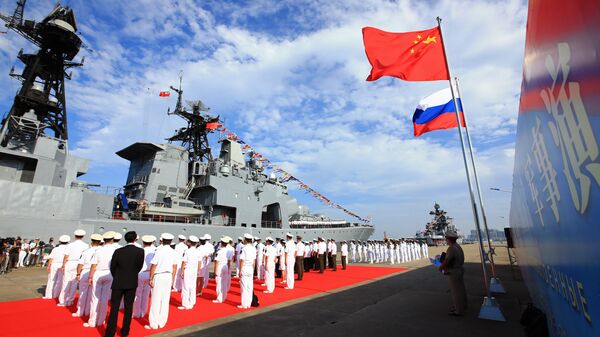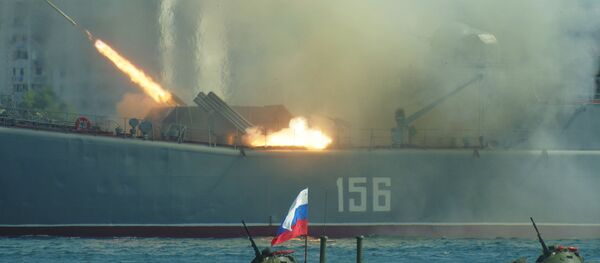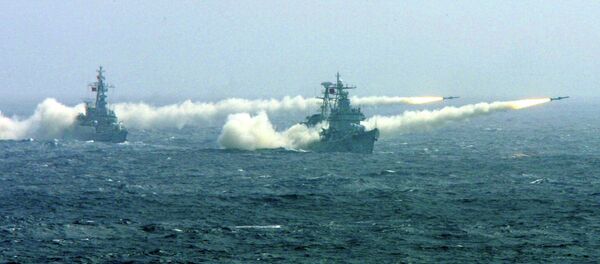The exercise will involve two submarines, 13 surface ships, 20 aircraft and helicopters, more than 250 marines as well as 12 armored personnel carriers and amphibious armored vehicles from the Chinese People's Liberation Army Navy (PLAN) and the Russian Navy's Pacific Fleet.
Dmitriy Mosyakov, head of the Center for South-East Asia, Australia and Oceania at the Russian Institute of Oriental Studies, told Vzglyad that neighboring countries like Taiwan, The Philippines and Vietnam are unlikely to perceive the drills as a threat, given the US attempts to increase its naval presence in the region.
"They understand very well in all these countries that the real reason for Russian-Chinese drills is the growing activity of the US navy in this region. For example, the number of US submarines there has increased a lot recently," Mosyakov said, adding that the drills were planned long in advance and none of the neighboring nations have sought to link them to territorial disputes with China in the South China Sea.
"The Chinese sailors are very well-prepared. From the point of view of joint exercises and countering the potential enemy, these are serious exercises and a serious effort," Khmelnov said.
In July the Hague-based Permanent Court of Arbitration ruled in favor of the Philippines in its territorial dispute with China over the South China Sea. Manila brought the case to the court in 2013, with backing from the US.
However, China has refused to recognize the court's jurisdiction over the dispute, and has instead called for bilateral negotiations among the parties to the dispute.
On Monday Philippines President Rodrigo Duterte demanded that US special forces leave the south of the country, where they have been fighting Islamic insurgents.
"The statement reflects [Mr Duterte's] new direction towards coursing an independent foreign policy," explained the President's spokesman Ernesto Abella.
As well as China and the Philippines, Vietnam, Indonesia, Taiwan, and Brunei also make overlapping claims to the South China Sea, a highly contested region which includes the disputed Spratly and Paracel Islands, and through which nearly $5 trillion in international trade passes annually.
"At the moment China is the only country which needs Russian technology and raw materials and at the same time has the capacity to support Russia. The main thing is, that China is a real match for the US," Sivkov said.
Russia's ship group in Naval Interaction 2016 consists of major anti-submarine warfare ships Admiral Tributs and Admiral Vinogradov, the major landing ship Peresvet, the sea tug Alatau and the Pechenga tanker.
Корабли #ТОФ прибыли в #КНР для участия в учении РФ и Китая #МорскоеВзаимодействие2016 https://t.co/MLPXEdRNBs pic.twitter.com/NMVdWai5B6
— Минобороны России (@mod_russia) 12 сентября 2016 г.
'Ships of the Pacific Fleet arrived in China to take part in the drills,' Russia's Ministry of Defense reported.
From September 12-19, the navies will conduct search and rescue and defense operations such as defending anchored ships and releasing a captured vessel. They will also practice rocket and artillery strikes on naval targets. In the final stage of the exercises, Russian and Chinese armed forces will carry out a joint landing on a hypothetically captured island, using naval and air force paratroopers.
Russian navy vice-admiral Alexander Fedotenkov said that the joint drills, which first took place in the Yellow Sea in 2012, are intended to help the two countries collaborate in defense.
"Our co-operation is not directed against anybody, it is directed at the defense of our mutual interests, securing cooperation in all areas of the world ocean. It's very good when two big, powerful countries cooperate. It guarantees peace not only in the regions where our countries are located, but also practically across the whole world."
"This is cooperation in fighting pirates and ensuring freedom of navigation. It is an organization of teamwork, which has above all peaceful aims," Fedotenkov said, RIA Novosti reported.





